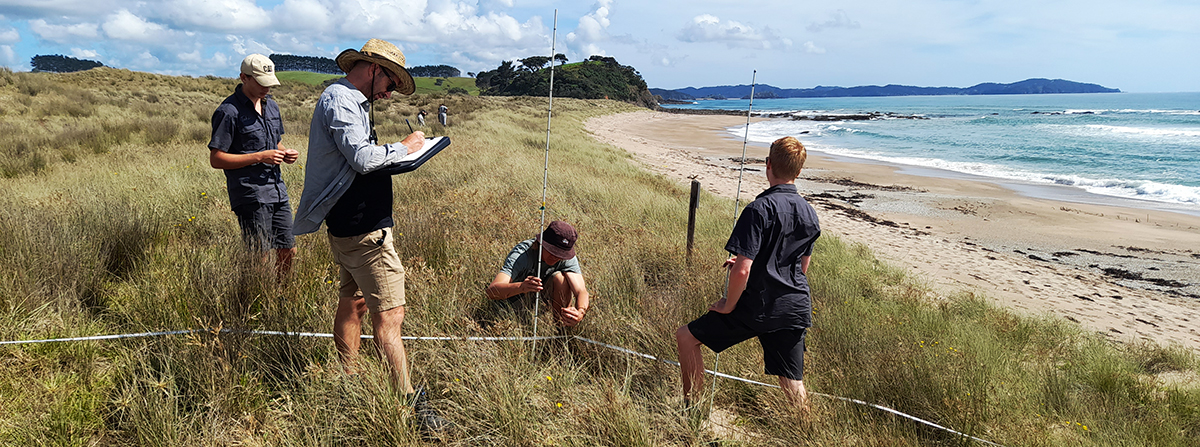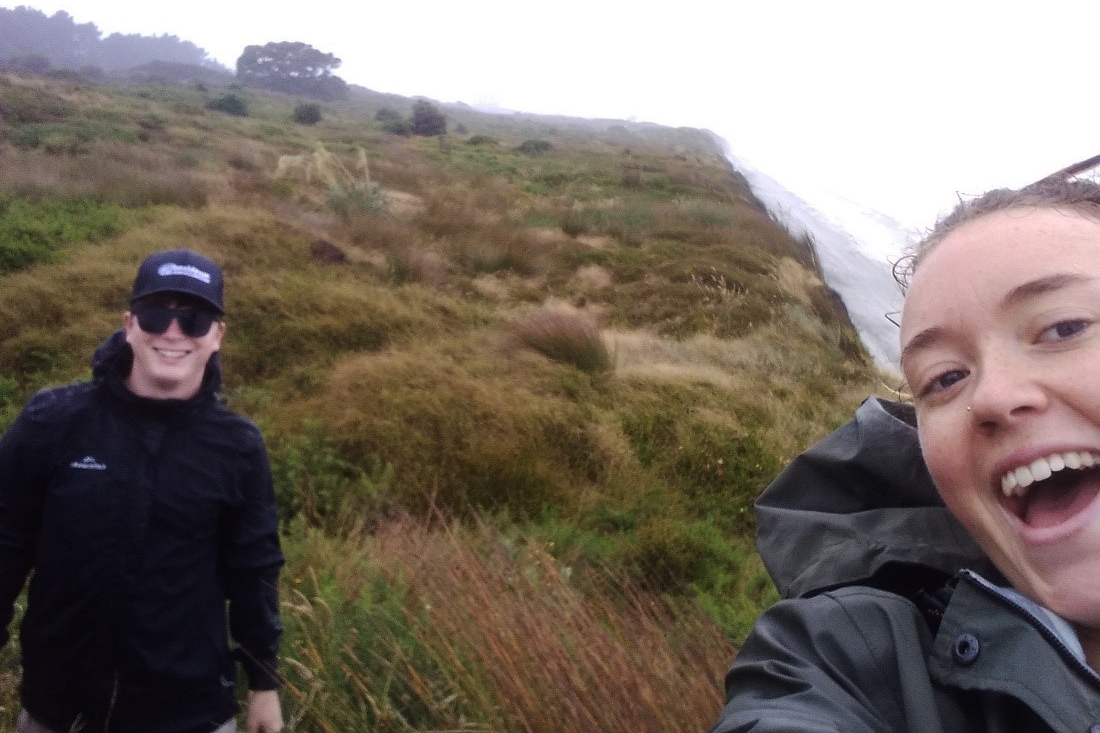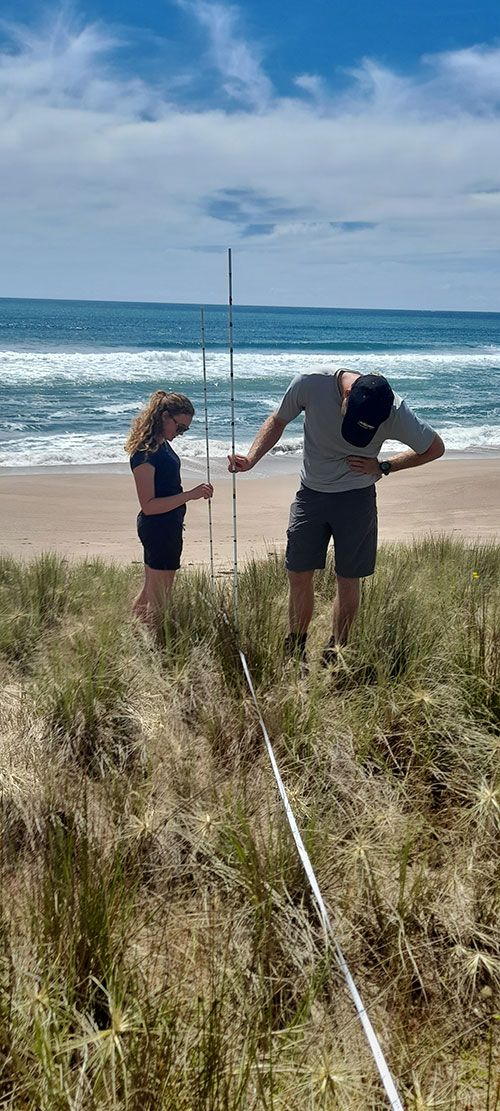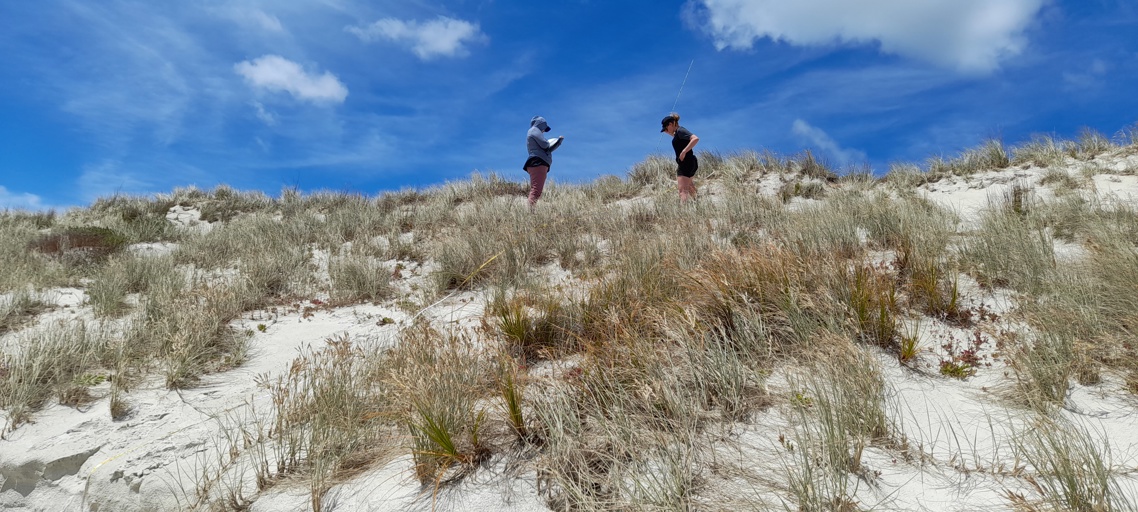Story
Dune Monitoring by Summer Interns comes to a close

Dune monitoring at Pataua North with staff from Tahi.
The sand dunes of Te Taitokerau are a unique and beautiful, culturally significant ecosystem. They are a natural defence against coastal hazards such as erosion and are home to some of Te Taitokerau’s most threatened native species.
Northland Regional Council (NRC) conducts annual dune monitoring as part of the Coastal Restoration Trust’s nationwide dune monitoring programme, looking at vegetation cover and dune shape as a snapshot of dune health. Drone footage is also used to create a digital elevation model that provides information about a dune’s shape and profile. There are now 14 monitoring sites around Northland and most are surveyed annually, with ongoing input from iwi and community groups, such as the 2021 collaboration with Patuharakeke Te Iwi Trust Board and Northtec on a pilot study in Bream Bay to monitor native fauna (creatures).
The annual dune monitoring survey is conducted by NRC with invaluable contribution from interns on the Summer Student Programme.
This summer Heidi Lowe has been battling the elements as part of the team undertaking dune monitoring and litter intelligence at some of our most popular beaches. Heidi is a second-year student of Applied Science in Tauranga and she signed up to NRC’s intern programme to gain practical experience in the workplace whilst pursuing her passion for the environment.
Heidi explained the dune vegetation monitoring is undertaken using transects (survey lines) across the relevant sites, with the results providing a record of vegetation cover, the abundance of native plants and the presence of pest plants.

Heidi Lowe and Jared Mills (summer interns) battle the elements.
The results of the vegetation monitoring are uploaded to the coastal monitoring database of the Coastal Restoration Trust at: monitoring.coastalrestorationtrust.org.nz/survey-data/northland
The surveys began in 2017, so over the course of five years the data provides useful comparisons to evaluate the progress of dune restoration programmes and is showing encouraging results. By way of example, native species vegetation cover at one of the transects at Ruakākā Surf Club increased from 37% in 2017 to 88% in 2022, due to effective control of Acacia (wattle).
A particular highlight for Heidi was spotting the rare native Rauparaha’s Copper butterfly (Lycaena rauparaha) and critically endangered fairy terns / tara iti at Waipu. She was able to track the progress of Sand Daphne/autetaranga (Pimelea villosa), a rare native shrub of the foredunes, and enjoyed working in partnership with iwi and the inspiring levels of community engagement at different sites.
If you’d like to get involved in dune monitoring and contribute to the nationwide coastal monitoring database, you can contact CoastCare at CoastCare@nrc.govt.nz. Iwi/hapū, schools, families and groups of friends are all welcome to join in.
For more information:

Heidi Lowe and Kieran from QE2 Trust dune monitoring - Summer 2023




